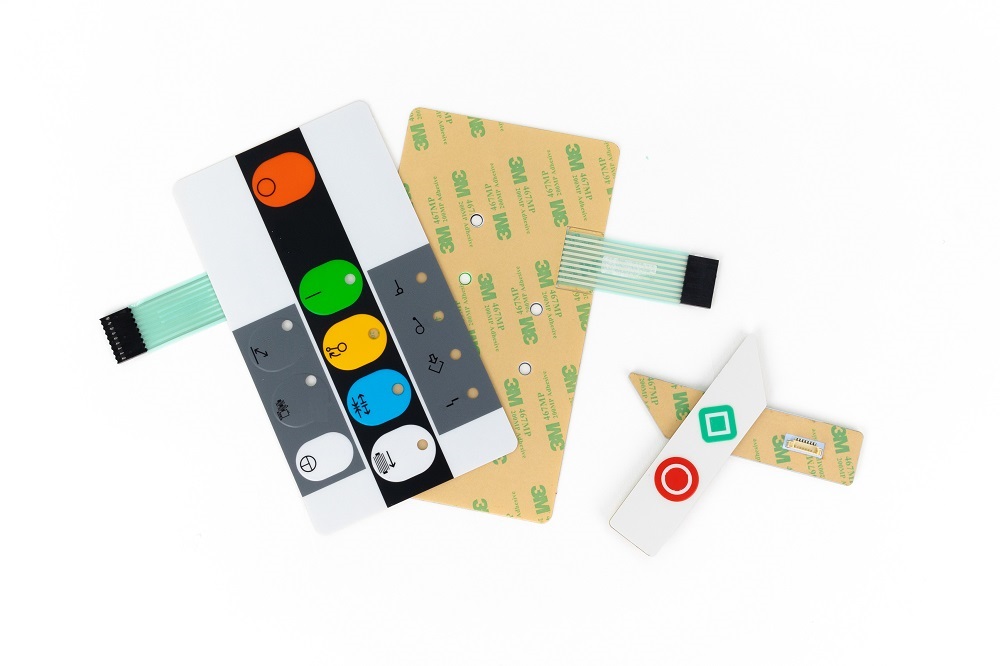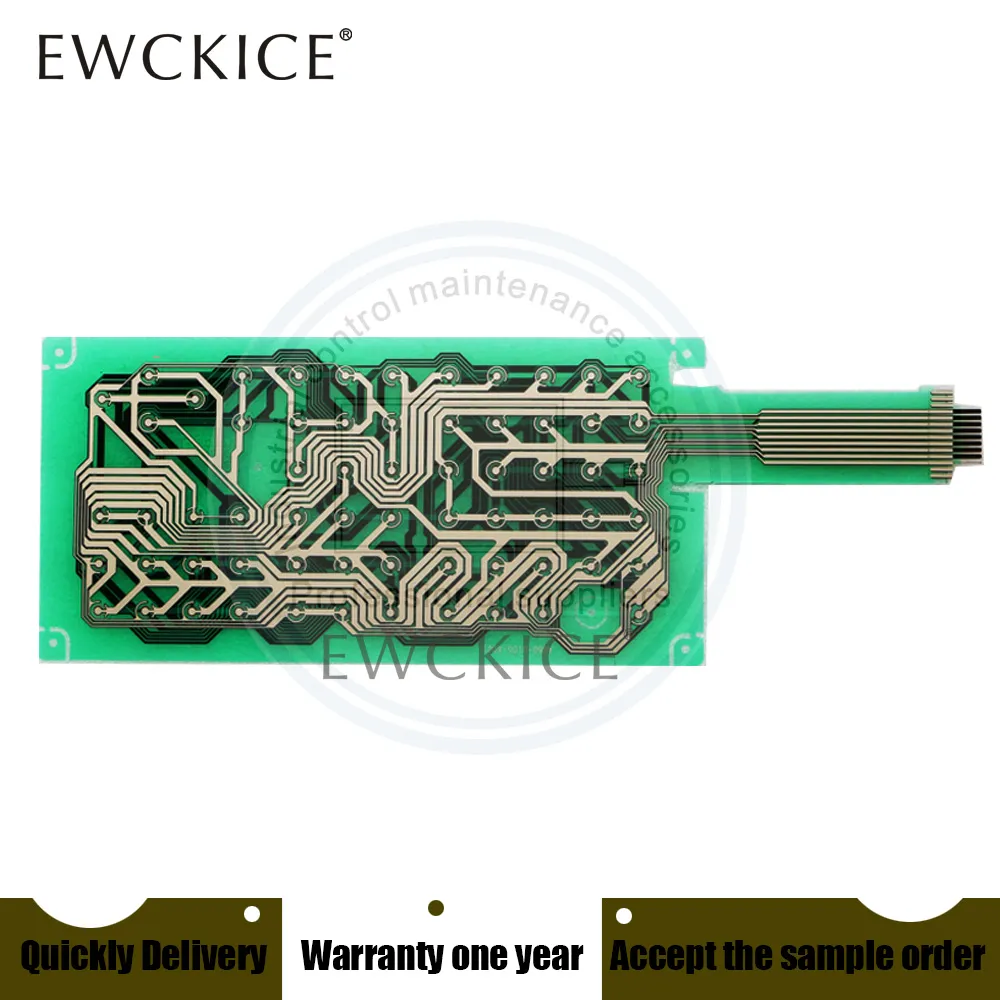Membrane Switch: Reliable, Cost-Effective, and User-Friendly Control Systems
Membrane Switch: Reliable, Cost-Effective, and User-Friendly Control Systems
Blog Article
Understanding Membrane Layer Changes: The Key to Dependable and resilient Controls

What Are Membrane Buttons?
Membrane layer switches are an advanced remedy in the world of individual interface modern technology, combining functionality and style effortlessly. These tools serve as an interface in between customers and digital systems, incorporating a number of elements right into a small layout. Commonly constructed from adaptable, thin layers of materials, membrane buttons are created to respond to touch, making it possible for customers to connect with equipment and digital devices effectively.
The main elements of a membrane layer switch consist of a printed circuit layer, graphic overlay, and a spacer layer that avoids unintentional activation. The visuals overlay can be customized to reflect brand name identity or customer choices, enhancing appearances while making certain functionality. Membrane layer switches are frequently utilized in different applications, including clinical gadgets, consumer electronic devices, and industrial devices, owing to their durability and resistance to ecological factors such as dampness and dirt.
One of the vital benefits of membrane layer buttons is their capability to stand up to deterioration, making them excellent for high-traffic atmospheres. Furthermore, they are lightweight and call for marginal area, permitting for innovative styles in item growth. Generally, membrane layer changes represent a reliable and useful selection for modern-day digital user interfaces, weding modern technology with user-centric design principles.
How Membrane Layer Changes Work
The procedure of membrane layer switches over hinges on a straightforward yet efficient device that translates customer input into electronic signals. When a user presses the switch, the top layer warps, enabling a conductive component in the circuit layer to make contact with an equivalent conductive pad on the bottom of the graphic overlay.
The style of membrane layer buttons can differ, yet they typically integrate domes or responsive elements to provide feedback to the individual, boosting the overall experience - membrane switch. The products made use of in membrane switches, such as polyester or polycarbonate, add to their durability and resistance to environmental aspects, including wetness and dust. Furthermore, the printed circuits are generally encapsulated, which secures them from deterioration in time.
Benefits of Membrane Layer Switches

Furthermore, membrane layer switches are known for their toughness. Built from robust products, they are resistant to dirt, moisture, and physical wear, which significantly expands their lifespan compared to see it here conventional mechanical buttons. This resilience makes them especially suitable for high-traffic atmospheres and applications requiring long life.
One more considerable benefit is the convenience of cleaning and upkeep. The smooth surface area of membrane switches over minimizes dirt buildup and is usually check my source invulnerable to spills, making them suitable for setups that need frequent sanitization.
In addition, membrane buttons use a streamlined account, leading to a thinner layout that can be integrated right into different gadgets without including mass. This function not only enhances the visual appeal however additionally adds to a more ergonomic product style.
Applications of Membrane Layer Switches
Functional and straightforward, membrane layer buttons locate applications throughout a wide variety of sectors, including medical tools, consumer electronic devices, and commercial devices. In the medical field, these buttons are essential to tools such as diagnostic tools, individual tracking systems, and infusion pumps, where dependability and ease of cleaning are critical. Their capacity to preserve and stand up to extreme environments capability makes them excellent for such applications.

In consumer electronic devices, membrane buttons are made use of in items like microwaves, washing equipments, and push-button controls - membrane switch. Their sleek layout enables user-friendly customer interfaces, boosting the total individual experience while supplying sturdiness and resistance to tear and use
Commercial tools also benefits from membrane layer switches, particularly in control panels for machinery and automation systems. These switches provide defense versus dirt and dampness, making sure constant performance in challenging atmospheres. In addition, their personalized functions permit producers to customize them to certain operational demands, improving performance and performance.
Selecting the Right Membrane Switch
When choosing a membrane switch, it is important to think about various factors that affect performance and viability for certain applications. The main considerations consist of ecological conditions, tactile responses, longevity, and style specifications.
First, assess the operating setting; switches revealed to wetness, chemicals, or extreme temperatures require details products to ensure durability and functionality. Next off, examine the need for responsive comments. Depending on customer interaction, some applications may profit from a tactile feedback to verify activation, while others may favor a non-tactile style for visual reasons.
Resilience is an additional important element; membrane layer switches need to be created to withstand constant use, influences, and abrasion. Guarantee the picked switch can withstand the expected lifecycle, especially in high-usage scenarios.

Verdict
In verdict, membrane layer switches serve as crucial components in the style of trusted and durable control systems throughout numerous industries. The adaptability of membrane layer switches allows for tailored options that fulfill details operational needs, strengthening their relevance in modern-day technology.
Membrane layer switches stand for an essential aspect of modern user interface style, blending functionality this website with durability in numerous applications.Membrane layer buttons are an innovative remedy in the world of customer interface technology, combining functionality and design seamlessly. Usually built from versatile, thin layers of materials, membrane buttons are made to react to touch, making it possible for customers to engage with equipment and electronic gadgets efficiently.
The design of membrane layer buttons can differ, however they typically integrate domes or tactile components to give comments to the individual, enhancing the overall experience.In verdict, membrane layer changes serve as essential parts in the style of reputable and durable control systems throughout different industries.
Report this page